If you’re a small or medium-sized manufacturer of just about anything, you’ve no doubt heard about 3D printing, also called additive manufacturing (AM). Billed as the latest technological revolution in manufacturing, AM is capable of making everything from bicycle seats to rocket thrusters, and promises to make all types of parts and products faster, cheaper, lighter, and more sustainably.
3D printing enables part shape and design not possible with any other technology and uses materials ranging from everyday metals and plastics to unique polymer composites and even human tissue.
And now, the Biden Administration is encouraging all American small and medium-sized manufacturers to get on board with additive manufacturing. The recently launched AM Forward program includes financing for your new 3D printers, training for your staff, and even a market of willing buyers for your American-made 3D printed products.
Perhaps you’ve heard all this, and now your question is: How do I get started?
Here, some of the industry’s top thought leaders and makers of 3D printers share the advice they’ve been giving customers for years on how to incorporate 3D printing into existing manufacturing operations to grow business.
Step 1: Find an AM Champion
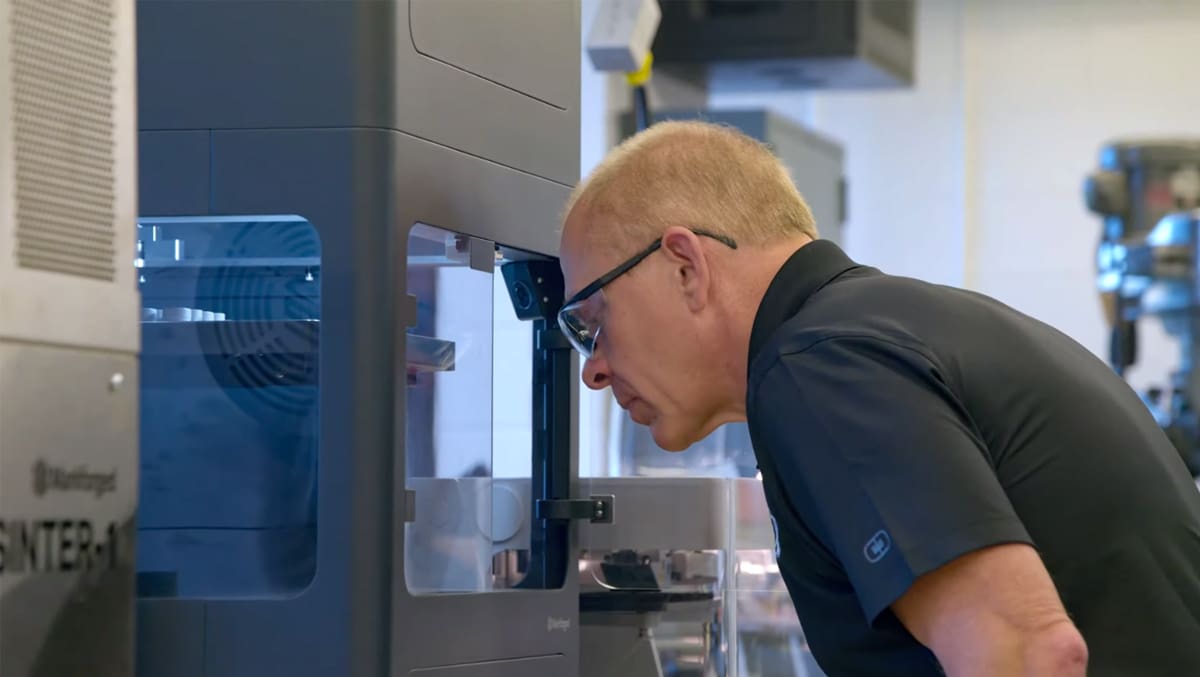
Your company’s road to adopting AM starts with one person who has the courage to step out of the company’s comfort zone and investigate alternative approaches to the way things have always been done.
“You need a point person, as a subject matter expert,” says Tuan TranPham, an industry veteran of several 3D printer manufacturers and currently the chief revenue officer of Azul3D. “You need to have one champion who is going to be responsible, whether that person is an engineer or not doesn’t really matter, it could be the intern or the young engineer who brings fresh thinking to the field.”
A big hurdle the AM champion has to overcome is convincing management to disrupt the company’s day-to-day business processes, which may have been in place for decades, with something new. The best way to do this is with new, young engineers or technicians who are not yet fully incorporated into the daily business routines of the company and are more open to new solutions, says AM industry consultant Matthias Schmidt-Lehr, co-founder of Ampower.
For a company that doesn’t already have someone interested in additive manufacturing willing to spearhead the AM program development, you may need to hire an engineer with additive manufacturing experience. The but goal, industry experts agree is to not have a manager tasked with AM, but to have someone excited and invested in it.
Then, the best way to turn an AM champion into a valuable implementation leader is with training and education. “Know-how is indeed a key enabler and a current hurdle to adoption,” says Schmidt-Lehr. Fortunately, there’s a growing range of opportunities to learn about additive manufacturing, but this also means, management must give engineers the time and budget to go through training.
“Read, go online, attend additive manufacturing events, such as Rapid TCT and Formnext, talk to universities doing work in AM, and reach out to 3D printer OEMs,” says TranPham, “then it’s really about networking because people in this industry are actually very willing to share.”
Your own AM champion will be the knowledgeable point person bringing what they’ve learned to the rest of the company in a way that inspires everyone from machinists to upper management to get on board. He or she can dispel the common myths about AM and illustrate how it applies to your specific company and the parts you produce.
“The fastest and most impactful way of additive adoption is when a company or individual grasps the full potential of the technology and realizes the full breadth of problems it can solve,” echos Peter Schulte, a strategic application engineer at 3D printer maker Markforged.
Step 2: Align Additive Manufacturing to Company Goals
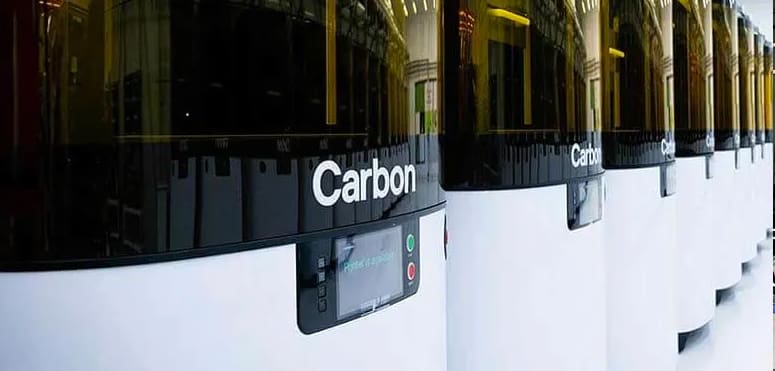
Once you have an AM advocate within your organization in the lead, then you can begin to explore your additive manufacturing options and strategize how it can be applied to your company’s top-line goals.
This is a critical step, says Debbra Rogers, chief revenue officer at 3D printer manufacturer Carbon. “The initiative owner or leader has to align additive manufacturing in some way to the top goals of the company. We find that when additive manufacturing becomes a special side project or dislocated from the overall company strategy, and when the leader can’t get the meat behind it, it doesn’t go anywhere.”
3D printing is a key enabler of a wide range of company goals, especially among small and medium-sized manufacturers.
“Opportunities for AM could take the form of customized manufacturing, low volume production for spare parts, new product innovation where you don’t want to invest in tooling or large quantities, products or parts that need a new technical durability, have complex geometries, or that need a specific fashion aesthetic,” says Lou Rassey, co-founder and CEO of Fast Radius, an on-demand additive manufacturing company with its Cloud Manufacturing Platform and a growing microfactory footprint.
Other company goals enabled with 3D printing include:
- Bringing new products to market faster with rapid prototyping
- Unblocking supply chains by producing parts locally
- Reshoring manufacturing
- Producing parts faster and cheaper than overseas
- Eliminating part inventories with 3D print-on-demand ability
- Creating parts that function better with designs only unattainable with 3D printing
- Optimizing product performance by consolidating large assemblies into fewer parts
In fact, there’s no shortage of manufacturing company goals that can’t be achieved or advanced with 3D printing, but it’s not a fix for everything.
“My best advice to companies looking to adopt additive is to do it for the right reasons,” says Schulte, who has seen applications for a wide range of the wrong reasons, including to have the latest and greatest fashionable tech whether it gets used or not, to apply an additive solution to a singular business challenge then abandon it, or even as a recruiting tool.
Additive manufacturing adopted for the wrong reasons, launched without the full backing of company owners, or established without a roadmap to success isn’t likely to be effective, experts agree. Likewise, additive manufacturing adopted on a very small scale or a very low investment – aside from outsourcing it – isn’t going to produce the return it’s capable of.
“Always focus on the transformative over the incremental,” adds Schulte. “Look for the challenges and problems that AM can solve and find ways that additive will elevate the business processes overall.”
This is not to say that AM technology is designed to replace traditional manufacturing technology, most manufacturers use both additive and traditional side-by-side. However, additive manufacturing is, in fact, positively transformative if implemented correctly.
Step 3: Determine What, Specifically, You Want to 3D Print
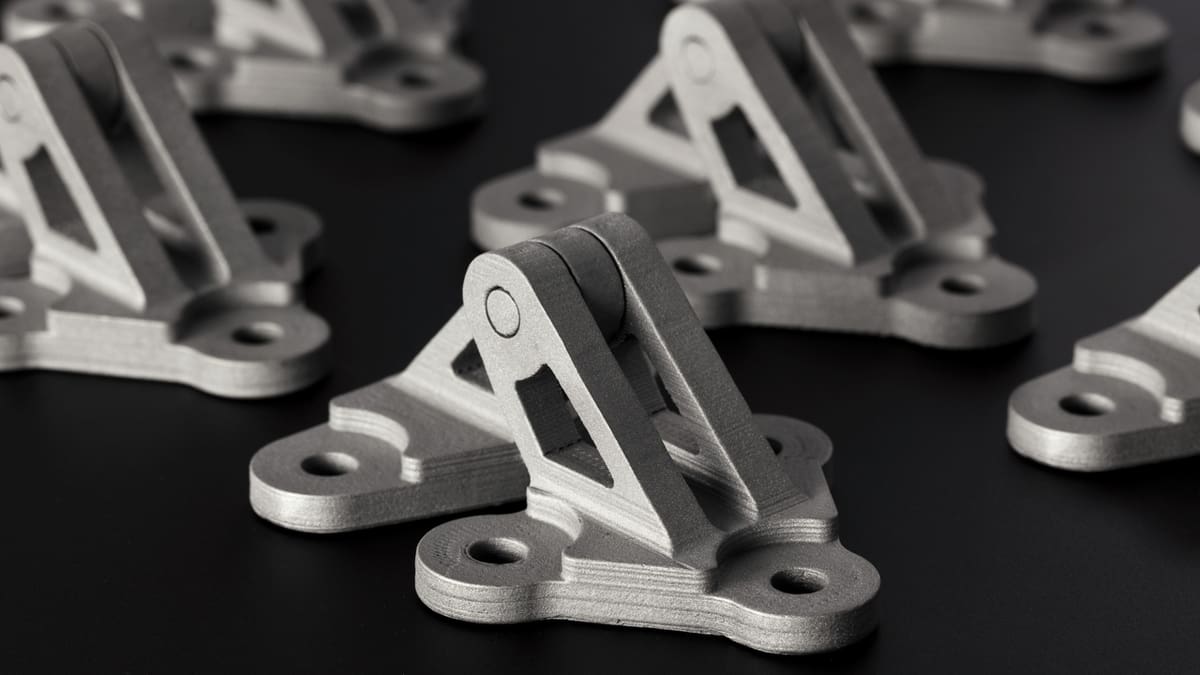
The worst mistake a manufacturer can make in adopting AM is to use it to make the exact same products they are currently making, industry experts agree.
“Don’t just look at the parts that you’re making right now in your machine shop or in your casting shop, and ask; Can I print them?,” says Jonah Myerberg, co-founder and CTO of 3D printer maker Desktop Metal. “You need to look at the application of the part and ask: Should I be 3D printing this part or should I improve this part?”
Additive manufacturing enables manufacturers to redesign for lighter, stronger, and better parts and products. Multiple parts can be consolidated into one 3D printed part removing assembly labor and increasing efficiencies.
At its core, additive manufacturing is a digital process that begins with a digital design of a part. “Engineers know that they have to figure out how they’re going to make the part before they start to design it,” says Myerberg. “Even though additive manufacturing is a new manufacturing process and not one that we all learned in school, learning it is no different than learning any other manufacturing process.”
But once companies understand the application of 3D printing, they can steer a design towards additive if additive makes sense, and away from additive, if traditional manufacturing methods are more suitable.
Looking at what your company produces now and discerning what it could reengineer and 3D print better is no easy task. This step in adoption may require more technical expertise than your AM champion holds. That’s why industry consultants, application engineers, and 3D printing service providers are ready to help.
“Manufacturers should investigate, where 3D printing could add the highest value with the lowest threshold for entry,” says Schmidt-Lehr. “In many cases, for small manufacturers, the field of jigs, tools, and fixtures can be the much better choice to start with compared to targeting end-use products right at the beginning.”
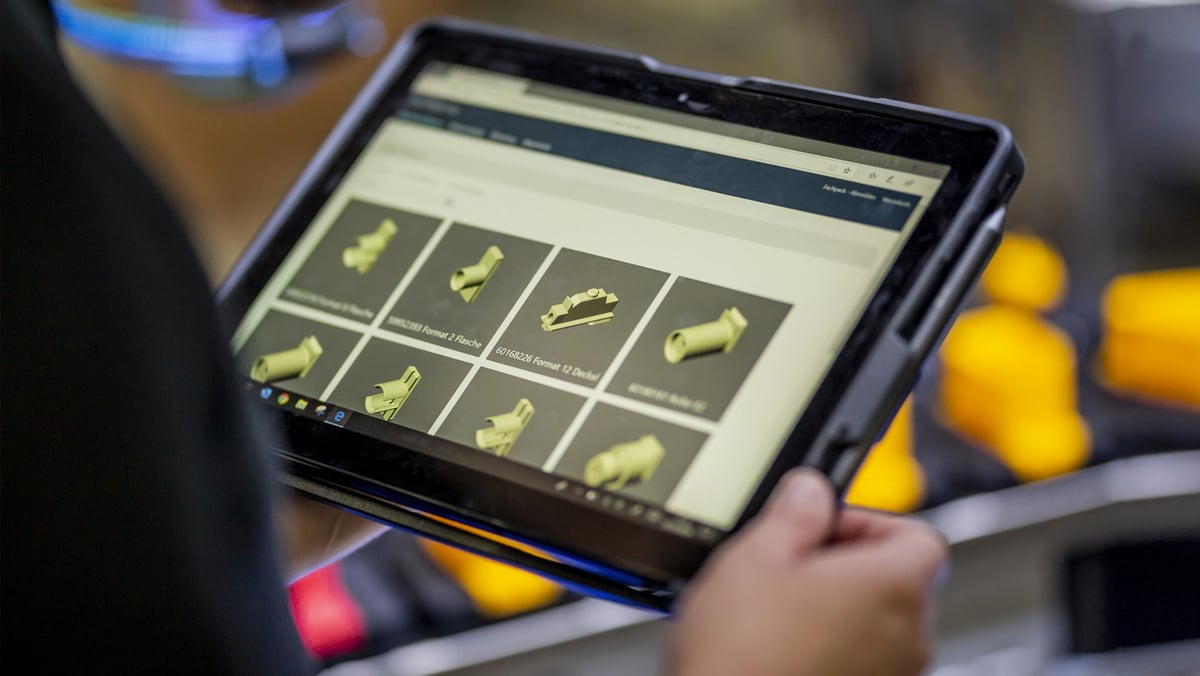
Software solutions, such as SpareParts3D or the 3D Print Barometer from Materialise, are starting to emerge that can analyze your existing digital part inventory and establish which parts are likely candidates for 3D printing, and which are not.
Most often, however, outside experts will lead you into a deep dive into how the parts or products you make – whether that’s end-use products you sell, tools or molds you use house, or spare parts – can be improved with 3D printing.
As industry consultant John Barnes, managing director of The Barnes Global Advisors (TBGA), explains: “There is always a point in the conversation where the “Ah-ha!” comes. Barnes and his team of veterans in additive manufacturing who now consult, guide companies in maturing and industrializing additive manufacturing through a number of tools to help them visualize their AM adoption journey.
The Barnes Advisors maturity model helps companies understand how long it may take to adopt and implement additive manufacturing and what each stage of adoption requires. Then there’s taking the company through the different kinds of 3D printing and what problems each one addresses best. Lastly is the readiness model that looks at the company’s machines, materials, digital capabilities, and people to see if there are any holes in their resources that would disrupt and successful program launch.
“The way AM is typically done best is when all the internal stakeholders understand it at some basic level,” says Barnes.”Otherwise, it’s an engineer pushing uphill which has its merits, but takes a long time.”
Products ripe for 3D printing include:
- One-of-a-kind parts, tools, and products
- Parts that require specific customizations to meet each customer’s requirements
- Single or low volume spare parts
- Part or product prototypes and functional prototypes for testing
Regardless of which parts your company will begin 3D printing, almost everyone we spoke to said to outsource the initial 3D printing to a service before purchasing your own 3D printers.
Step 4. Take AM for a Spin
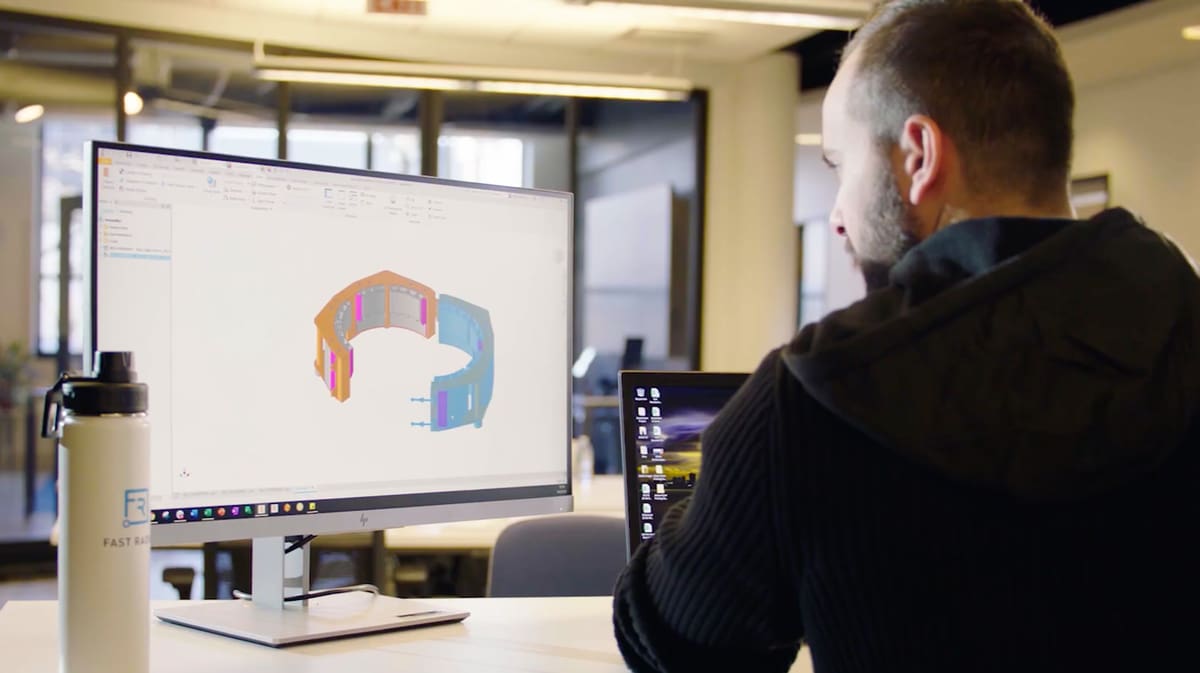
“Small manufacturers should always go with additive manufacturing service bureaus before they invest in a printer,” says Schmidt-Lehr. “This gives the opportunity to try out different technologies and materials.”
Use of print houses, contract manufacturers, or service bureaus smooths the road to adopting new technology, but all service providers are not the same.
“Find a service that has deep experience in additive as well as a high level of skill in designing for those processes,” says Schulte. “Some will offer design consultation as a paid service, and while it does mean more up-front cost, the true value is in the depth of experience that you are paying for and the likely shortening of overall lead time to a successful end product. This approach can accelerate the transition from conventional manufacturing to AM.”
If you already have engineering expertise in-house, contract 3D printing can help guide the search for which 3D printing systems you may ultimately choose to buy and which materials deliver the quality and performance you require. “Building out a business case while proving the use of the additive parts helps provide confidence for management to make an investment in an additive solution,” says Schulte.
Even after you’ve adopted additive manufacturing as an in-house solution, you still may turn to contract printing when demand surges or when scaling before adding internal capacity is required. 3D printed marketplaces, such as Craftcloud, enable you to receive quotes on your parts from a range of additive manufacturers.
Contract additive manufacturing is a booming market in the US and Europe with dozens of new companies entering the market each year. Some specialize according to material or technology while others focus on specific industries, such as aerospace or health care, but most are becoming 3D printing generalists offering a wide range of technologies, materials, and design services.
“The role of 3D printing service providers in advancing the adoption of additive manufacturing is extremely important,” says Myerberg. “These are the experts and power users, but whether you use a service provider or bring it in-house has to do with your end game: are you looking to design for additive and consume it, or are you looking to really embrace it and drive it forward as part of your business.”
If your company’s core business is not related to producing a part or product then outsourcing 3D printing may make the best business sense. A candy factory is a great example of a company that had the engineering skills to design a custom tool or fixture needed on factory floor, but the manufacture of the part itself could be more applicable to a service. This scenario changes as the volume of parts increases.
“We’ve gone through this cycle with a lot of the large automotive companies who are buying 3D printers and learning how to design and optimize for them,” says Myerberg, “but in the long term is Ford going to print their own parts themselves? Likely, they will push it to their tier one, tier two, or tier three manufacturers.”
However, Myerber notes that it’s still critical that engineers at companies like Ford learn the technology, the nuances of the materials, and truly understand the processes and costs, because it feeds back into their design considerations. “The best part designers are the people who actually operate the 3D printers,” he says.
On the other hand, TranPham says most people will not need to own and operate their own 3D printers. “I think there will come a point where manufacturers don’t need to have an engineer or open a CAD file or know which 3D printing technology they need because the service bureau will manage all that.”
Part 5. Upskill Your Work Force
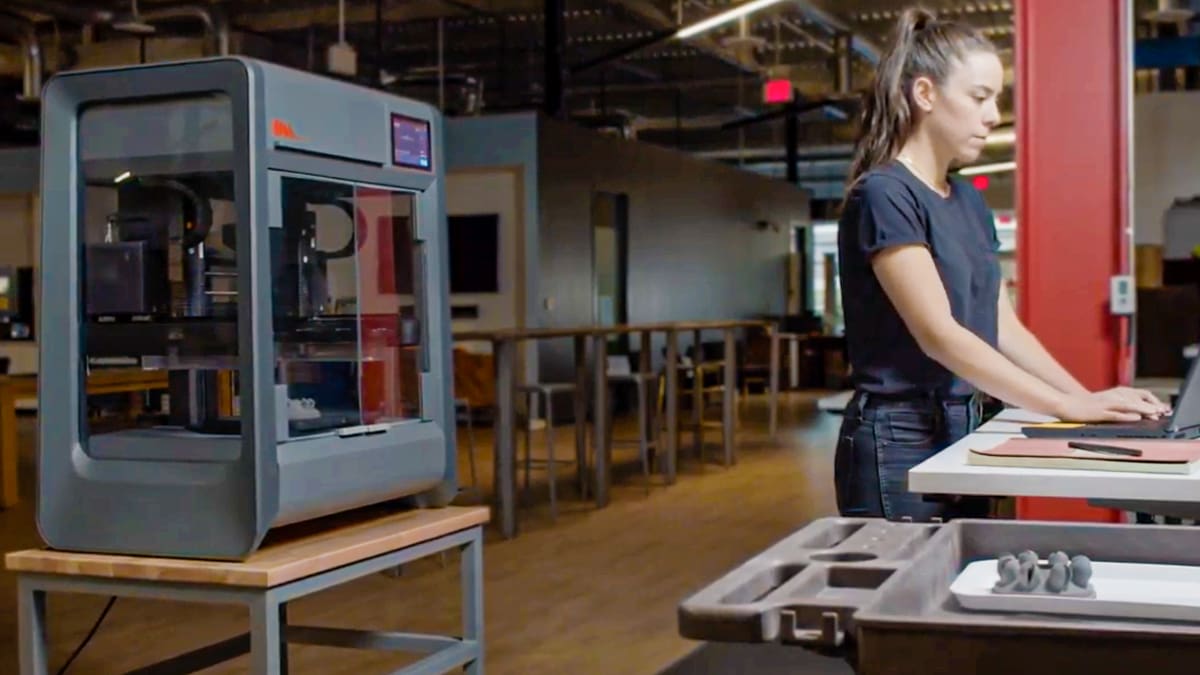
Even with the guidance of your AM champion, consultants, and printer manufacturers, moving to (or adding) a new manufacturing technology to your business will ultimately require in-house expertise in design, engineering, and production. Your workforce will need to operate 3D printers and post-processing and quality assurance equipment. They’ll need to understand the AM-specific materials and stay on top of the rapidly advancing technology and new printers on the market.
3D printer manufacturers offer a range of company-specific and general training, and there’s a move to introduce certification programs for individual printers. Equipment resellers offer training and more universities offer Master’s degree programs and certifications in additive manufacturing. TBGA, for example, offers the Additive Manufacturing Certificate Program with Purdue University, that’s completely online.
In the end, experts agree, adopting AM is no different than adopting any other new method.
“Although it’s not every day that a new manufacturing process is born,” says Myerberg. “I think it happened 50 or 60 years ago with metal injection molding, where the powdered metal industry said hey, we can not only stamp these parts but we can injection mold them like plastic. Engineers had to learn new techniques and new design rules. We’re at that point right now with additive manufacturing.”
It’s at this critical moment in manufacturing – where AM technology is mature enough to be making a significant impact in a wide range of industries, yet is still somewhat obscure to the vast number of business who could benefit from it most – that the Biden Administration partnered with AM industry leaders to launch the AM Forward program in the US.
AM Forward is intended to ignite an initial investigation into additive manufacturing adoption for small and medium-sized manufacturers.
“AM Forward certainly gives management another push to invest in additive manufacturing,” says Schmidt-Lehr. “This enables further investigation by engineers and will open more opportunities for companies.”
“[AM Forward is] a great way to galvanize the entire industry,” adds Myerberg. “Now you’ve got companies that want to invest in this technology, they want to be a leader, they believe in it, and that’s who you want. You don’t want just the companies that can afford it, you want everyone to have the ability to learn it, develop it, and advance it. And that’s where the government can play a really strong role in, pushing this forward.”
The goal of AM Forward is to reassure manufacturing that 3D printing is a mature, viable solution and take off some of the stresses that come with adopting new technology and reengineering your business plan. Advanced technical assistance to adopt 3D printers will come from the Department of Energy’s Manufacturing Demonstration Facility at Oak Ridge National Laboratory, where manufacturers can test new additive techniques. The Small Business Administration will work with the participants of AM Forward on loans to support the widespread deployment of new additive manufacturing capabilities across U.S. industry. These are just two of the support programs included in the initiative, which the administration hopes will enable more local companies to make their own products in the US without foreign investment.
“The AM Forward program will further accelerate the move towards AM for many industries,” says Schmidt-Lehr. “The hardest part is the first step.”
License: The text of "Manufacturers’ 5-Step Guide to Adopting Additive Manufacturing" by All3DP Pro is licensed under a Creative Commons Attribution 4.0 International License.


